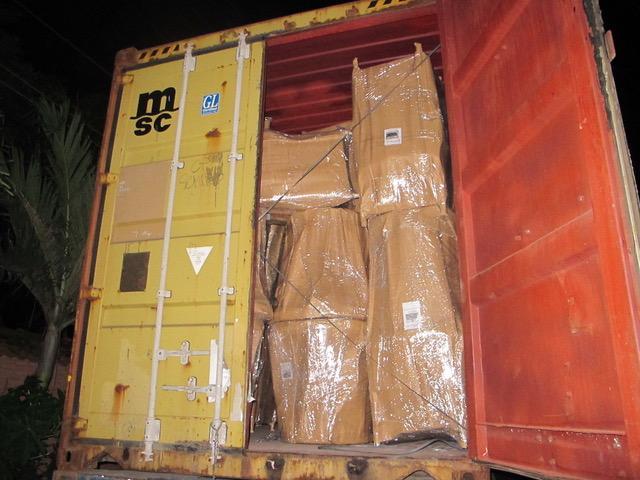Have you ever thought about taking your business to the global market? Exporting is a great way to reach more customers and boost your profits. But when it comes to exportation, there are different approaches you can take – direct exporting and traditional exporting. In this topic, we will take a closer look at these two approaches and how you can use them to gain surplus profits for your business.
Surplus profits in exporting
It is a fancy term for the extra profits a company can make when they sell their products in foreign markets and make more money than they would domestically. There are lots of ways to achieve these profits, like finding ways to save on costs, setting strategic prices, and having effective marketing strategies. It is really important for businesses to aim for these surplus profits because it helps them increase their revenues, reach more customers, and stay competitive.
Direct & Traditional Exporting
Direct Exporting
Direct exporting involves selling products directly to customers in a foreign market, without the involvement of intermediaries. This method offers several advantages in gaining surplus profits, including:
Higher profit margins: By cutting out intermediaries, the company can retain a larger share of the profits, resulting in higher profit margins.
More control over the exporting process: With direct exporting, the company controls the exporting process comprehensively, including logistics, sales, and customer service. This allows the company to tailor its approach to the specific needs of the market and customers.
Better customer relationships: By interacting directly with customers, the company can build stronger relationships and gain valuable feedback that can help improve its products and services.
Faster response to market changes: Direct exporting enables the company to quickly respond to market changes and adapt its strategy accordingly, which can help it stay competitive in the global marketplace.
Traditional Exporting
Traditional exporting involves using intermediaries or third-party distributors to facilitate the export process. The company sells its products to a middleman, who then sells the products to customers in the foreign market. Some advantages of traditional exporting in growing surplus profits include:
Access to established distribution networks: Traditional exporting offers access to established distribution networks and established relationships with customers, which can be difficult to establish for companies new to the foreign market.
Shared risks with intermediaries: By using intermediaries, companies can share the risks and costs of exporting with others who have experience and knowledge of the foreign market.
Lower upfront costs: Traditional exporting can require lower upfront costs than direct exporting, as companies do not need to invest as much in resources and infrastructure to set up their own distribution networks in the foreign market.
Comparison of Direct and Traditional Exporting
In fact, direct exporting and traditional exporting are two popular methods used by companies, each with its unique features that impact the company’s bottom line. Deciding on the most effective method to gain extra profits when exporting can be challenging as each method has its own set of advantages and disadvantages:
| Direct Exporting | Traditional Exporting | |
| Pro | Higher profit margins
More control over the exporting process Better customer relationships Faster response to market changes |
Access to established distribution networks
Shared risks with intermediaries Lower upfront costs Easier to enter new markets |
| Cons
|
Higher upfront costs
Greater investment in resources and infrastructure Requires a deeper understanding of the foreign market and regulations |
Lower profit margins due to intermediary fees
Less control over the exporting process Limited customer relationships and feedback Slow response to market changes |
Best Practices for Gaining Surplus Profits in Exporting

Gaining surplus profits through exporting requires more than just exporting products to a foreign market. To succeed in the global marketplace, businesses need to adopt best practices that maximize their chances of success. Following suggestions, companies should adopt to get competition as much as possible:
Market research and analysis: Thoroughly research and analyze the target market to identify the needs and preferences of customers, the competitive landscape, and the regulatory environment.
Building relationships with customers and intermediaries: Establish strong relationships with customers and intermediaries to build trust and loyalty, and gain valuable feedback to improve products and services.
Strategic pricing and cost management: Set prices strategically to maximize profits, while keeping costs under control through efficient logistics and supply chain management.
Constant evaluation and adjustment of export strategy: Continuously evaluate the effectiveness of the export strategy and adjust as necessary to respond to market changes and optimize results.
In conclusion, when comparing direct exporting may require a higher investment in resources and infrastructure compared to traditional exporting, but it can lead to higher profit margins and greater control over the exporting process. While traditional exporting offers access to established distribution networks and shared risks with intermediaries, it may result in lower profit margins and less control over the process. Deciding between the two approaches depends on the specific goals and resources of the company, as well as the target market’s characteristics.
With over 10 years of experience, VIEC is a trusted trade agency that understands your business and supports you in reaching out Vietnam market in the most efficient way, especially through direct export. You might want to know more about how we can help you to export your product directly to your customers in the Netherlands or Vietnam. Let’s start with a free consultation hour with our expert now.








